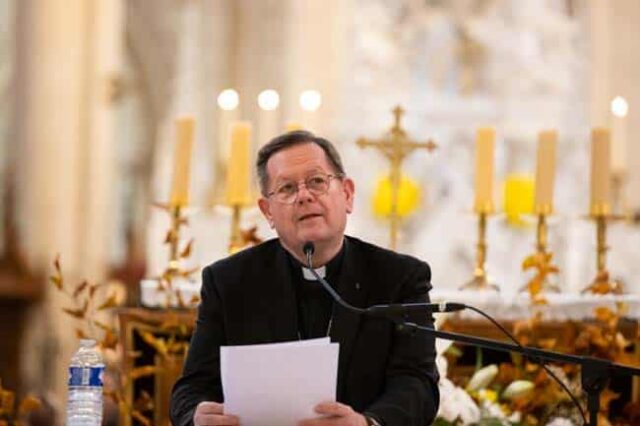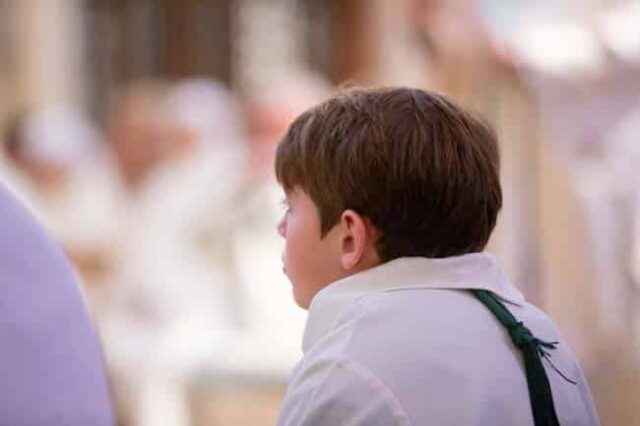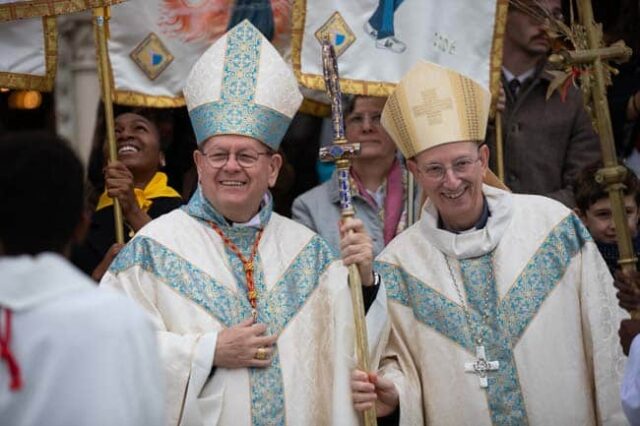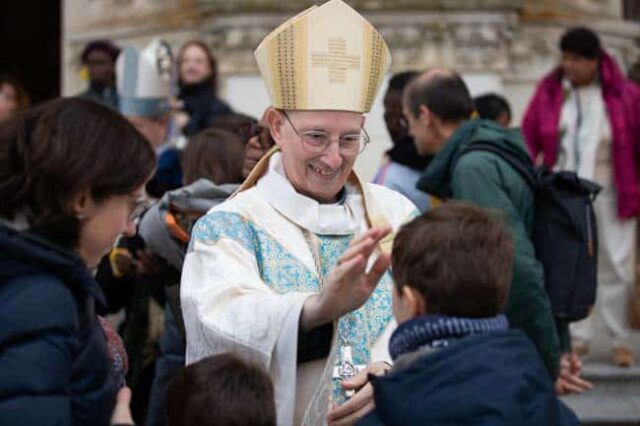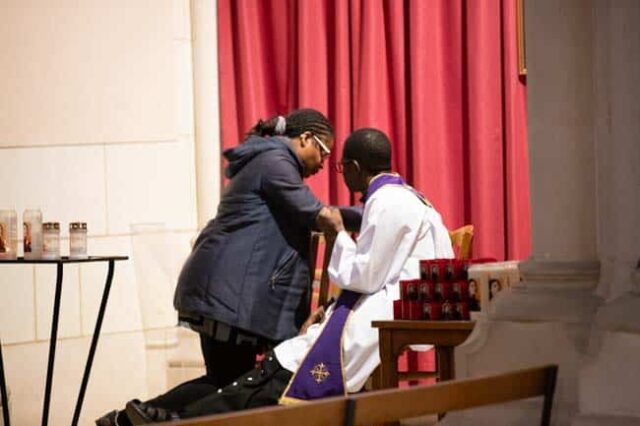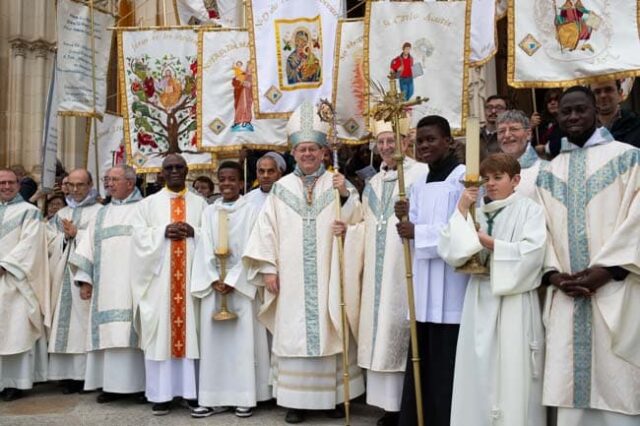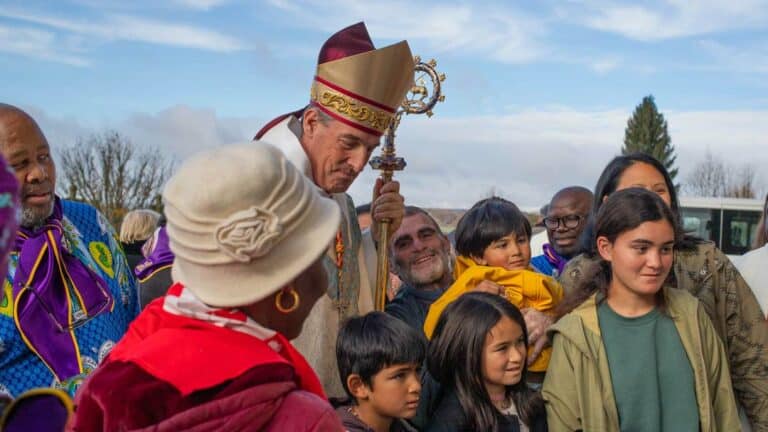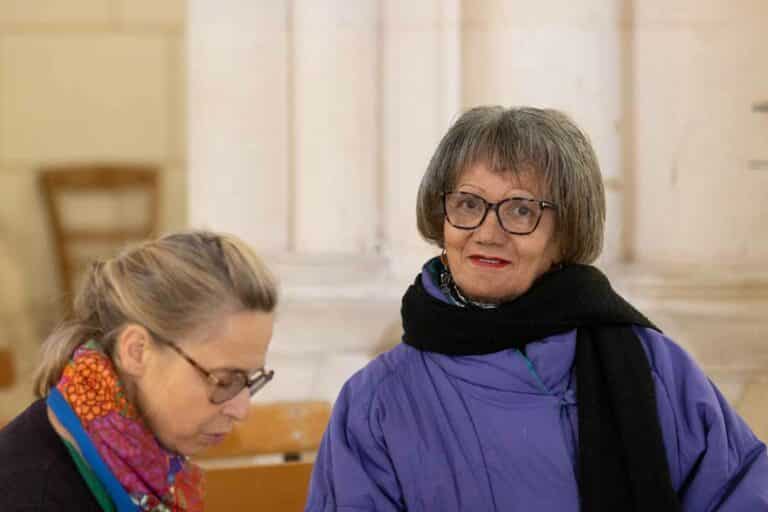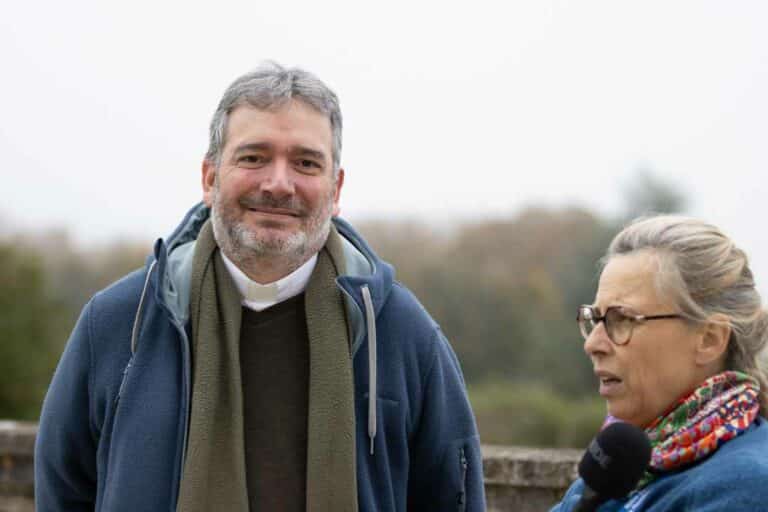“Shrines are places where God’s people seeks hope”, claims Cardinal Gerald Cyprien Lacroix in confidence. Also the archbishop of Quebec, we met him at the end of the Mass of the Pilgrimage of Heaven on Nov. 9; 2025. “Those places devoted to prayer unite the living and the dead in one same communion.” Whilst nowadays many move away from funeral rites, he recalls the unshakable hope offered by the Christian faith – the resurrection. Interviewed by Amelie, he discusses the brotherliness uniting the believers to those who are already “in the heart of God” and emotionally shares the memory of his deceased sister.
Shrines are places of hope and communion
“Shrines like Montligeon gather the people of God, people from all walks of life, each with their own story and their own past”, remarks Cardinal Gérald Cyprien Lacroix. These pilgrims come to get “a word to deepen and discover the path of life.”
In Montligeon, this quest for hope has its own peculiar color, through prayer for the deceased. The Cardinal describes the invisible brotherhood between the living and those who came before us: “Christ’s body is us on this earth, but part of this body is already in the after-life, on its way to eternal life, in God’s heart. Today, we have just prayed for those people we will not forget.”
Thus, prayer becomes a link, a common breathing between the earth and Heaven.
“We are all part of the same body, visible and invisible, the body of Christ.
Let us pray for all the bereaved families around the world…
Before leaving Montligeon, the Cardinal entrusts a special intention: “Let’s pray for all the bereaved families around the world, in particular for those who have lost the way to hope.”
He regrets the gradual disappearance of the Christian rites surrounding death: “More and more people die and get incinerated or buried with no transition through the Church, without any prayer. He thinks that if those gestures, even if they are “not bad”, are still insufficient. “We need to rediscover the hope provided to us by Christian faith, i.e. resurrection, eternal life and the resurrection of the flesh.”
Such words have a deep resonance at Montligeon.
Hope grounded on the Cross and the Resurrection
In the face of death, the Christian hope is not just based on moral support but on a certainty – the victory of Christ over death. “When we look at Jesus on the cross, we know that death did not have the final say,” asserts the Cardinal; resurrection did.” Reminding us of the symbolism of Christian funerals, he adds: “For that reason, the crucified is placed on one side of the coffin and the paschal candle on the other. Death and resurrection, such is the core of our faith.”
With this hope, which is materialized and transmitted in the Church’s rites, the families are enabled to go through the ordeal of bereavement without loosing the meaning of life. It shed a new light on death, the light of Passover.
“Death does not have final say – life does.”
“My younger sister Nicole died aged 58, after fighting cancer. When she went to intensive care, someone told her: ‘Madam, you are coming here to die.’ She replied: “I don’t. I am coming here to live right to the end.” Cardinal Lacroix stresses that those words encapsulate what living in faith actually means: welcoming life to the end, between the hands of God. By entrusting Nicole to Montligeon’s prayer, he joins all those who keep the memory of a beloved deceased in their hearts.
According to the Church’s teaching on the communion of saints, our prayers and acts of charity can benefit the deceased, helping them to enter eternal life more quickly.


